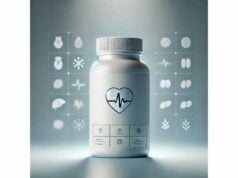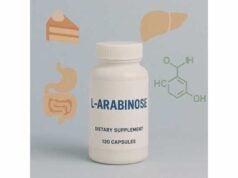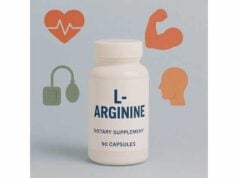
Leptadenia reticulata—known in Ayurveda as Jeevanti—is a climbing herb traditionally valued to support vitality, female reproductive health, and recovery from fatigue. Modern laboratory studies have identified flavonoids, coumarins, and steroidal compounds that may explain antioxidant, anti-inflammatory, and hepatoprotective effects. People today encounter the plant as a powdered herb, encapsulated extract, or part of multi-herb formulations. Because the scientific record is still developing and most data come from cell or animal research, it’s wise to treat claims cautiously, choose reliable products, and match your expectations to the evidence. This guide translates traditional knowledge and contemporary research into clear, practical advice—covering what it is, how it might work, realistic benefits, how to use it, dosage ranges used in practice, and who should avoid it. You’ll also learn how to select quality supplements and how to monitor your response safely.
Key Insights
- Antioxidant and anti-inflammatory compounds may support liver and metabolic health.
- Traditional use includes supporting lactation and recovery from exhaustion.
- Typical supplement amounts: 500–1,500 mg dried herb daily or 250–600 mg standardized extract daily.
- Safety caveat: limited human trials; start low, monitor for gastrointestinal discomfort or allergy.
- Avoid use in pregnancy without clinician guidance; use caution with liver disease medicines and hormone-sensitive conditions.
Table of Contents
- What is Leptadenia reticulata?
- Does it work? Key benefits
- How to use and dosage
- Forms, quality, and labels
- Safety, side effects, and interactions
- Evidence summary and research gaps
What is Leptadenia reticulata?
Leptadenia reticulata (family Apocynaceae) is a perennial climber native to the Indian subcontinent’s dry and semi-arid regions. In classical Ayurvedic texts, Jeevanti belongs to the rasayana (“rejuvenative”) category—botanicals used to restore strength, support resilience to stress, and nourish reproductive tissues. Folk practice extends to postpartum recovery and support for breast milk flow, often in combination with other herbs. Contemporary phytochemical work shows that the plant contains flavonoids (e.g., quercetin glycosides), phenolic acids, coumarins, and steroidal constituents that can act as antioxidants and modulators of inflammatory pathways in preclinical models.
Which part is used? Traditional preparations most often employ the stems and leaves, though roots appear in certain formulations. Dried herb powders are simmered as decoctions or mixed into ghee, while modern supplements favor encapsulated powders and hydro-alcoholic extracts. The plant’s pleasant, faintly sweet taste makes it suitable for food-like preparations, including tonics with milk or nut milks.
How might it work? In vitro studies report scavenging of free radicals and suppression of oxidative stress markers. Animal studies suggest hepatoprotective actions—helping maintain liver enzyme balance when animals are exposed to chemical stressors. Early structural biology work has also isolated coumarin derivatives with cytoprotective properties in lab models. These mechanisms align with the plant’s traditional role in supporting recovery from fatigue and illness: tonics that reduce oxidative burden and low-grade inflammation may indirectly improve energy, sleep quality, and general wellbeing.
What it is not: There are no robust, replicated human clinical trials demonstrating disease treatment. As with many botanicals, the research is promising but preliminary. That makes product quality, realistic goals, and careful self-monitoring especially important.
In short, Leptadenia reticulata is a traditional rasayana herb with preclinical evidence for antioxidant and liver-supportive actions, now available as single-ingredient capsules or blended formulas aimed at vitality, recovery, and women’s health.
Does it work? Key benefits
When you sort traditional claims through the lens of modern research, a practical picture emerges: several potential benefits are biologically plausible, but human evidence is sparse. Here’s what the current landscape supports most credibly.
1) Antioxidant defense and cellular protection. Multiple lab studies show the plant’s extracts neutralize free radicals and reduce indices of oxidative stress. In one investigation comparing tissue-cultured and wild plants, ethyl acetate fractions demonstrated strong free-radical scavenging and a correlation between antioxidant capacity and cytoprotective activity in human cell lines. Antioxidant action does not guarantee performance in people, but it supports the use case for general resilience, especially during periods of high physiological demand (e.g., intense work schedules, athletic training, or recovery from illness).
2) Liver support under chemical stress. Animal models of chemical-induced liver injury show that Leptadenia reticulata extracts can help maintain healthier levels of AST, ALT, and alkaline phosphatase while preserving hepatic architecture on histology. For everyday users, that translates into a cautious, evidence-informed rationale to view the herb as a supportive adjunct for maintaining liver wellness—never a substitute for medical management of liver disease or a license to overuse alcohol or hepatotoxic drugs.
3) Inflammation balance and comfort. Downstream of antioxidant activity is modulation of inflammatory signaling. Preclinical work suggests that constituent groups such as flavonoids and coumarins can dampen pro-inflammatory mediators. Practically, users sometimes report improved comfort in the context of overexertion or convalescence. Because pain and inflammation are multi-factorial, expectations should be modest; botanical support is typically incremental.
4) Traditional women’s health support. In Ayurveda, Jeevanti is included in formulations for postpartum nourishment and, historically, to support healthy breast milk flow. Modern trials specifically isolating Leptadenia reticulata for lactation are lacking. Still, the plant’s nutritive and tonic profile, plus long traditional use, explains why it appears in women’s health blends today. Anyone considering use while nursing should involve a knowledgeable clinician to weigh potential benefits against the scant direct research.
5) Energy and recovery. “Rasayana” herbs are chosen to restore vigor. While that promise is broad, it can be grounded in mechanisms: supporting redox balance, sleep quality (indirectly via stress recovery), and hepatic detoxification pathways may collectively help you feel more resilient. Benefits like steadier energy typically unfold gradually over 2–8 weeks of consistent use; abrupt, stimulant-like effects are not expected.
What not to expect. There is no credible evidence that Leptadenia reticulata causes rapid fat loss, cures infertility, or treats cancer in humans. Cell-line cytotoxicity findings are a starting point for drug discovery, not a clinical recommendation. Keep the focus on gentle support for resilience and recovery.
How to use and dosage
Because standardized human dosing has not been established, practical guidance relies on traditional ranges, common supplement labeling, and safety margins from preclinical work. Start low, increase gradually, and coordinate with your healthcare professional—especially if you take prescription medications.
Common forms
- Dried herb powder (leaf/stem): Encapsulated or mixed into warm milk, smoothies, or tonics.
- Standardized extract (hydro-alcoholic): Concentrates active phenolics and coumarins; typical standardizations cite total phenolics or a house marker compound.
- Multi-herb blends: Women’s health or “vitality” formulas often include Jeevanti alongside ashwagandha, shatavari, or guduchi. Dose per herb may be lower in blends.
Typical amounts used in practice
- Dried herb: 500–1,500 mg per day in divided doses (e.g., 250–500 mg, two to three times daily with food).
- Standardized extract (10:1 or similar): 250–600 mg per day, divided.
- Tea/decoction: 2–3 grams dried herb simmered in 250–300 mL water for 10–15 minutes; consume once daily, especially in the evening if using for restoration.
Timing and stacking
- Take with food to minimize gastrointestinal upset and to improve absorption of lipophilic constituents.
- If using a multi-herb vitality stack (e.g., with ashwagandha), consider taking Leptadenia in the evening and stimulating adaptogens earlier in the day to balance energy and sleep.
- Cycling: 8–12 weeks on, 2–4 weeks off, gives you a checkpoint to reassess benefits and tolerability.
For specific goals (examples, not prescriptions)
- General recovery: 300 mg extract twice daily for 8 weeks, logging sleep, energy, and training load.
- Liver wellness support: 250–400 mg extract with the main meal; prioritize lifestyle factors (alcohol intake, weight management) that exert far stronger effects.
- Postpartum nourishment (with clinician input): If approved, favor food-like preparations (e.g., low-dose decoction or blends) rather than high-potency extracts, and monitor the infant for any changes in stooling or fussiness.
When to adjust
- Reduce or pause if you experience reflux, nausea, itching, or a rash.
- Increase slowly (every 7–10 days) only if well tolerated and goals are unmet.
- Stop and consult a clinician if liver-related symptoms arise (dark urine, jaundice, unusual fatigue).
As with any botanical, individual response varies. Anchoring your trial with a simple log—sleep quality, energy on rising, exercise recovery, and digestion—will help you decide if continuing makes sense after 6–8 weeks.
Forms, quality, and labels
Choosing a well-made product matters more than squeezing a few extra milligrams into your regimen. Here’s how to evaluate quality for Leptadenia reticulata.
1) Identity and part used. The label should list Leptadenia reticulata (Retz.) Wight and Arn. and specify leaf, stem, root, or aerial parts. Traditional usage favors aerial parts; confirm that the product matches your intended use. If a blend calls the herb Jeevanti, ensure the botanical name sits beside it—several unrelated plants have similar vernacular names.
2) Extraction details. Look for solvent (e.g., hydro-alcoholic 70:30), extraction ratio (e.g., 10:1), and any marker compound or total phenolic content. Without standardization, batch-to-batch variability can be significant. For powdered herb, ask whether it’s wild-crafted or cultivated; sustainable cultivation with traceability is preferable for an at-risk species in some regions.
3) Third-party testing. Choose brands that publish certificates of analysis (CoAs) verifying identity (e.g., DNA or HPTLC), potency, heavy metals (lead, arsenic, cadmium, mercury), pesticide residues, and microbial limits. For lactation or postpartum use, these basics are non-negotiable.
4) Clean formulation. Avoid unnecessary excipients. If you’re sensitive, skip artificial colors and high-load flow agents. Capsules made of cellulose or pullulan suit most users; vegans should avoid gelatin.
5) Sourcing and sustainability. Ethical sourcing protects wild populations and local communities. Brands that partner with cultivators and document supply chains are less likely to contribute to overharvesting. If a product mentions “Good Agricultural and Collection Practices (GACP),” that’s a plus.
6) Storage and shelf life. Polyphenols degrade with heat, light, and humidity. Select opaque bottles with desiccants, store below 25°C (77°F), and target a shelf life of 24–36 months. Always close the cap tightly; moisture dulls activity and can increase microbial risk.
7) Label claims and realism. Be wary of claims that promise rapid weight loss, instant hormonal shifts, or disease treatment. With Leptadenia reticulata, benefits—if they occur—tend to be gradual and modest, contingent on overall habits (sleep, diet, exercise).
By applying these checks, you improve the odds that the supplement you choose actually contains what the label says and performs consistently from bottle to bottle.
Safety, side effects, and interactions
The modern safety profile for Leptadenia reticulata is incomplete because well-controlled human trials are scarce. Nonetheless, several practical guardrails can help you use it thoughtfully.
Common tolerability
At customary amounts, most people tolerate the herb without major issues. When side effects occur, they’re usually mild and digestive: bloating, slight nausea, or loose stools—especially with higher doses or on an empty stomach. Taking the supplement with food and dividing the daily amount into two or three doses generally improves comfort.
Allergy and sensitivity
As a member of the Apocynaceae family, Leptadenia reticulata contains latex-like sap in fresh material. Allergic reactions are uncommon with dried supplements but can include itching, hives, or throat irritation. Discontinue immediately at the first sign of hypersensitivity.
Liver considerations
Paradoxically, many people seek the herb for liver support while preclinical models suggest hepatoprotective effects. If you have diagnosed liver disease, elevated baseline enzymes, or a history of hepatitis, do not self-treat. Coordinate with your clinician and obtain periodic labs. Any new jaundice, dark urine, or right-upper-quadrant pain warrants urgent evaluation and cessation of the supplement.
Hormonal and reproductive health
Traditional texts describe women’s health uses, including postpartum support. Because direct human lactation trials isolating Leptadenia reticulata are lacking, nursing parents should only use it with clinician oversight and infant monitoring. During pregnancy, avoid use unless a qualified professional specifically recommends it; safety data are insufficient.
Potential interactions
- Liver-metabolized drugs: If you take medications relying on hepatic cytochrome P450 enzymes, theoretical interactions exist; monitor for changes in drug effect.
- Hormone-sensitive conditions: If you have estrogen- or androgen-sensitive conditions, use caution until more is known about endocrine effects of constituent compounds.
- Antioxidants and chemotherapy: High-dose antioxidant supplements can, in theory, interfere with some chemotherapy regimens. Patients with cancer should not use this herb without oncologist approval.
Populations that should avoid or seek supervision
- Pregnant individuals (insufficient data).
- Children (use only on clinician advice).
- People with active liver disease or unexplained liver enzyme elevations.
- Those on complex drug regimens where even small pharmacokinetic shifts matter (e.g., anti-rejection drugs, warfarin).
Practical safety plan
Begin at the low end of the suggested range, take with meals, and reassess after 2–4 weeks. If you plan to continue long term, build in a break after 8–12 weeks to confirm that perceived benefits persist after a pause.
Evidence summary and research gaps
Leptadenia reticulata sits at an interesting juncture: abundant traditional use, a growing body of phytochemistry and animal research, and minimal human trials. Understanding what we know—and what we don’t—prevents overpromising and helps you make grounded decisions.
Strengths of the evidence
- Phytochemical clarity is improving. Recent work has isolated specific coumarin and phenolic constituents and mapped probable biosynthetic pathways. That enables consistent standardization and targeted assays.
- Convergent preclinical signals. Independent studies show antioxidant activity, cytoprotective effects in cell models, and hepatoprotective actions in animals exposed to chemical stress. Such convergence increases biological plausibility for wellness support.
- Alignment with traditional use. Mechanisms identified (redox balance, inflammation modulation, liver protection) are coherent with rasayana claims of improved recovery and vitality.
Limitations
- Human data are sparse. There are few, if any, well-designed randomized controlled trials that isolate Leptadenia reticulata as a single intervention for defined outcomes.
- Dosing remains empirical. Without pharmacokinetic studies, dosage relies on traditional ranges and product conventions rather than precise, outcome-linked titration.
- Outcome relevance. Many studies use surrogate endpoints (enzyme levels, histology in animals, cell viability) rather than patient-centered outcomes like fatigue scores, sleep quality, or milk volume.
- Quality variability. As with many botanicals, species authentication, plant part used, and extraction method profoundly affect composition.
What high-quality future research should include
- Randomized, placebo-controlled trials targeting specific outcomes such as postpartum vitality, perceived recovery after exertion, or adjunctive liver wellness markers.
- Standardized extracts with transparent markers (e.g., total phenolics or characterized coumarins) to enable dose–response analysis.
- Safety pharmacology in humans: liver enzyme monitoring, endocrine panels, and adverse event tracking over 12–24 weeks.
- Mechanism-linked endpoints (oxidative stress biomarkers, inflammatory cytokines) paired with meaningful clinical measures (fatigue, sleep, mood, performance recovery).
Bottom line
If you value botanical support for general resilience and are comfortable with early-stage evidence, Leptadenia reticulata can be a reasonable, low-to-moderate-risk experiment when used thoughtfully, sourced well, and paired with cornerstone health behaviors. If you need proven, large-effect benefits for a medical condition, the science isn’t there yet—consider this herb a gentle adjunct, not a primary therapy.
References
- Evaluation of the hepatoprotective effect of Leptadenia reticulata 2011 (Animal Study)
- Biosynthesis, Characterization, and Biological Activities of Natural Phenolics and Their Derivatives 2024 (Review; includes Leptadenia reticulata constituents and activities)
- Cumambrin A from Leptadenia reticulata as a Novel Topoisomerase II Inhibitor 2024 (In vitro; structural/pharmacological characterization)
- Evaluation of antioxidant, in vitro cytotoxicity of micropropagated and naturally grown plants of Leptadenia reticulata (Retz.) Wight and Arn.—an endangered medicinal plant 2014 (In vitro)
Disclaimer
This information is educational and is not a substitute for personalized medical advice, diagnosis, or treatment. Always speak with a qualified healthcare professional before starting any new supplement, especially if you are pregnant or breastfeeding, have a medical condition, or take prescription medications. Never delay or disregard professional advice because of something you read here.
If you found this guide helpful, please consider sharing it on Facebook, X (formerly Twitter), or your favorite platform, and follow us for future updates. Your support helps us keep creating thoughtful, high-quality content.










